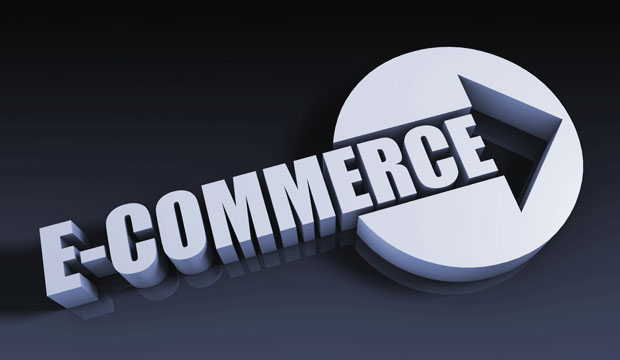There’s a reason that Amazon’s stock skyrocketed 28 percent in 2018, a notable outlier amid the broader market trends. The behemoth retailer is bolstered by a few key differentiators when stacked against the competition — but let’s backtrack for a moment to examine the state of the current online marketplace.
In truth, there’s an expectation in the market that buying online is cheaper. Yet it’s often more expensive to ship goods. Most online retailers make more money offline than online. It’s counterintuitive but true.
Retailers often are forced to discount their core product, but there’s still a high base cost on it. Online shopping makes price comparison easier than ever before, putting pressure on prices in an online environment. Sometimes discounting just cannot be avoided, and when a multichannel retailer has to provide price parity online and offline, this not only drives down margins for online sales, but also flows over to brick-and-mortar sales.
Unbeknownst to most consumers, Amazon’s retail business isn’t actually its bread and butter. It’s not the Subscribe & Save monthly toilet paper sales that are lining Bezos’ pockets. If you look at Amazon’s market releases and profit disclosures, you’ll see that its retail business basically is running at a loss — but its Amazon Web Services cloud hosting business is hugely profitable.
Amazon can subsidize its retail business and discount products with returns from its enormously profitable AWS business.
The strategy is reasonably consistent with how many tech companies function, but it isn’t aligned with the way that retail companies traditionally operate. In a sense, it’s similar to the operating model of platforms like Facebook and Google, which largely give away their core product for next-to-nothing and then monetize off the scale that is achieved.
Given Amazon’s share of the U.S. e-commerce market at 49 percent (5 percent of all retail spend), the online mammoth can offer many lessons in regard to the retail marketplace.
The largest takeaway for other retailers is its Amazon Web Services division. By the numbers, AWS and advertising accounted for a whopping 85 percent of Amazon’s profit this past year — no small feat, by any means.
Amazon has set a benchmark in the marketplace for diversified product and revenue streams. The question is, how can other online retailers replicate the model?
Traditionally, most pure-play retailers don’t have the luxury of a side business that generates billions of dollars of free cash flow. They have to make their profitability and margin out of their core product, which is their retail business. That said, we’ve seen the tide slowly changing. Today, 46 percent of retailers generate at least 10 percent of their turnover from secondary revenue streams, and that figure is only growing.
Taking a page out of Bezos’ playbook, it would behoove retail companies to explore new ways to compete with Amazon — either replicating Amazon’s model to create alternative revenue streams to supplement the cost of their core offering, or to come up with a different business model altogether.
It’s time retailers begin to think about untapped channels and new opportunities, such as insurance, service contracts, and vertically integrated services that further build brand loyalty. As you can imagine, Amazon already has been doing this for some time with its Home Services marketplace, which can help with everything from plumbing to smart home security installations.
Examine Existing Opportunities
So, how did Amazon put its strategy in place? It’s really a multipronged approach. First, the retail giant has an endless list of sellers, from carry-on luggage to charcoal toothpaste. If you examine the various merchants selling on the Amazon marketplace, they all have needs.
That provides Amazon with the perfect opportunity to hawk its cloud-hosting service. If a merchant needs a database technology, why wouldn’t it use Amazon Web Services? It’s easy to see how nearly overnight, Amazon created a massive cloud-based business that allows it to discount its core retail offerings.
Beyond Web services, there’s an opportunity for retailers to review their transactional data and examine the various products and services they can offer their shoppers based on their customers’ purchasing habits and histories.
For example, we can assume that an online shopper who visits a retail website and racks up US$500 worth of new luggage is headed to the nearest TSA checkpoint with passport in-hand. Smart brands would begin investigating additional services that they could tailor to known customer insights — layering a targeted travel insurance policy onto an existing luggage purchase, for example.
One great example of insurance capabilities comes from the Australian brand, Kogan. The electronics retailer went head-to-head with all the major retailers in Australia by sourcing cheap flatscreens and electronic equipment from Asia and selling directly to consumers online. It since has evolved its business to offer a full suite of insurance products — not just insurance for its bread-and-butter electronic assets, but also home insurance, and a number of other divisions, including health insurance, pet insurance, life insurance and travel insurance.
In the current landscape, the insurance opportunity for pure-play retailers is hugely underpenetrated. Insurtech companies can provide retailers with large ancillary revenue streams that allow them to be hypercompetitive with their core product and still add margin to their bottom line.
Many retailers have learned from their experience selling extended warranty products that selling protection products at the point of sale can generate serious money. However, most of them don’t realize that the opportunity is much broader than just extended warranties on electronics. Emerging insurtech companies have started to deploy fully featured insurance products for almost any physical asset of value. Eventually, these retailers will cotton to the fact that they are leaving money on the table, and we will start to see a much broader insurance offering at the point of sale.
Leverage Loyalty
Another notable case study is the British brand Tesco. What started as a multinational grocery chain expanded into an entire portfolio of services, including Tesco bank and Tesco insurance. It’s no surprise that it has become the third-largest retailer in the world by gross revenue alone.
The British brand proved that when a company builds a high degree of customer trust, it can parlay brand loyalty into the ability to sell other products that have a high-cost component built into them. Insurance is usually one of them. Banking services is another. Customers come to you to buy your core products for a reason. How else can you leverage that loyalty to start creating innovative opportunities?
That said, much of a retailer’s success comes down to the strength of its loyalty program. That is another arena in which Amazon excels through its Prime offering. For just $120 a year, customers can acquire Prime membership, and along with it, free expedited shipping, movie and music streaming, and exclusive deals, among a multitude of other perks. So, how can other online retailers begin to compete at that level?
There are untapped avenues to explore beyond insurance and loyalty programs. Looking at Amazon’s model, the retailer has employed an army of tradespeople ingeniously, to alleviate the burden of installation.
Got a new Amazon Echo or Nest Home Security system? Put down the stud finder and slowly back away from the toolbox. Amazon Services has a crew of trained technicians who will make house calls and install home electronics before you have the chance to electrocute yourself. As Amazon has shown, layering products and services around the core platform presents new ways to generate revenue.
Take a moment to ponder what services exist elsewhere in the value chain for the product that you’re selling. Imagine the Swedish home furnishings powerhouse, Ikea, for example. If it is selling DIY furniture, shouldn’t it also be offering a handyman service to install its Ektorp sectionals and Frgrik consoles? Seems like a no-brainer, and it is. Many successful businesses have been built around just that task.
It’s important to examine the downstream activities and opportunities based on what you’re retailing. Ask yourself what diversified revenue streams your core offerings can lead to.
As counterintuitive as it sounds, there’s also the opportunity to give away core products for free by finding a way of monetizing elsewhere. The Australian company After Pay has been advancing rapidly in the U.S. market — and not by accident. A point-of-sale financing solution, the company provides 90-day loans (at zero percent interest) to online shoppers.
Want to snag a $2,000 couture dress from the high-end retailer you’ve been coveting? After Pay to the rescue. By loaning money at point-of-sale, After Pay effectively has been increasing retailers’ conversion rates and average cart value significantly.
In return, retailers will pay the financing provider a fee or a percentage of the item purchased. Increasing conversions enables After Pay to give the loan away for free. It generates so much value for the retailer that the retailer pays for it.
In today’s ultra-competitive marketplace, with consumers dictating who stays and who goes, it’s imperative that retailers find alternate ways to generate revenue and support lower prices for customers. There’s a reason that among retailers with a secondary revenue strategy in place, three quarters reported greater margins in the past two years.
The current landscape is rife with untapped potential. Armed with a growth mindset, secondary revenue strategy, and creative diversification tactics, retailers have the ability to stay hypercompetitive in today’s saturated marketplace. Ultimately, the retailers who proactively explore secondary revenue streams are the ones who will future-proof their business and come out on top.














































Social Media
See all Social Media